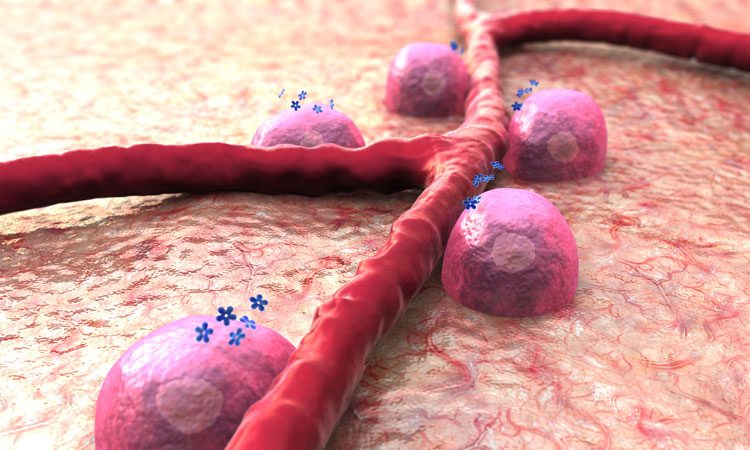Dysfunctional insulin release mechanism identified
Posted: 20 September 2019 | Rachael Harper (Drug Target Review) | No comments yet
A mechanism has been identified which regulates the release of insulin from β-cells and could be used to develop new treatments for type 2 diabetes.


Researchers have identified a previously unknown mechanism that regulates the release of insulin from the β-cells (beta cells) of the pancreas, which is disrupted in type 2 diabetes. The scientists hope this finding will be used to develop new treatments against the disease.
The scientists from Uppsala University, Sweden have identified a protein, Sac2, that is found at lower levels in patients with type 2 diabetes. In experiments, they showed that lowering the levels of this protein leads to reduced insulin secretion from the β-cells.
By using advanced microscopy techniques, the researchers were able to show that Sac2 is an important component on the surface of the insulin-containing secretory granules, where it modifies the fat composition of the membrane. In the absence of Sac2, a specific fat molecule accumulates on the surface of the secretory granules. This incapacitates them, so that they cannot dock to the cell membrane, which in turn causes insulin secretion to be reduced.
This study shows that reduced levels of a single protein give rise to β-cells that exhibit several defects associated with type 2 diabetes. It also shows that the fat composition of the insulin-containing secretory granules is of importance for their ability to be released from the cells.
The study was published in the Journal Of Cell Biology.
Related topics
Microscopy, Molecular Biology, Protein, Research & Development, Targets
Related conditions
Type-2 diabetes
Related organisations
Uppsala University








